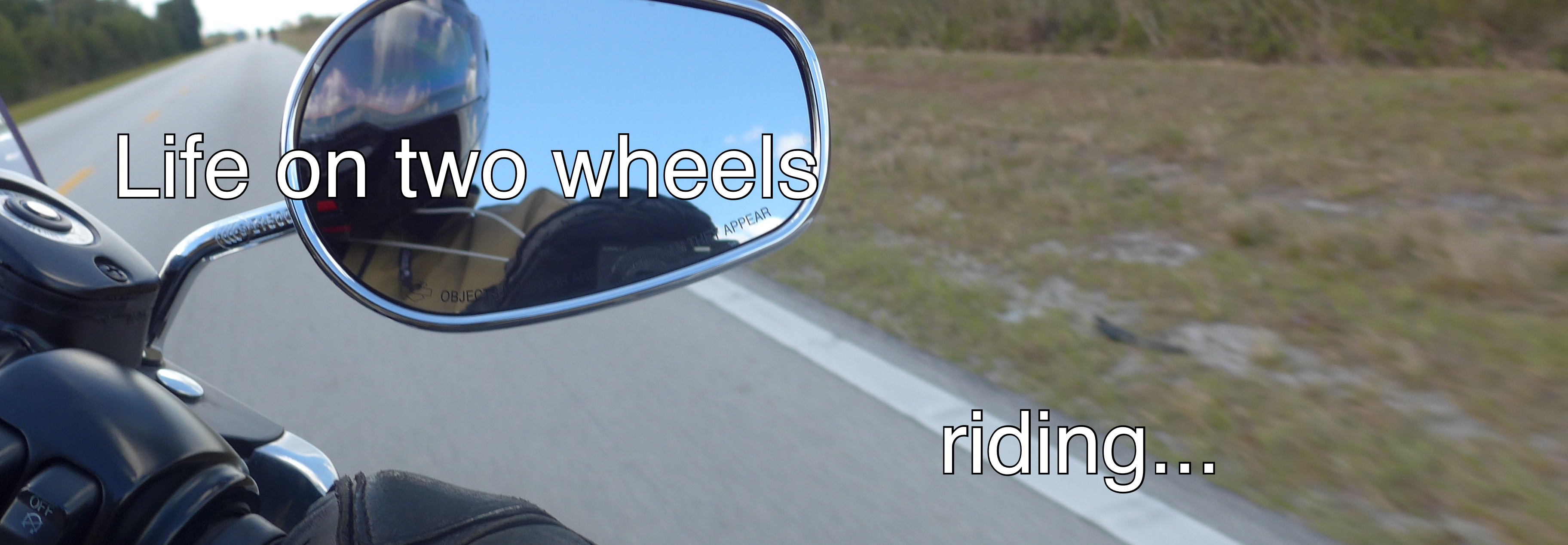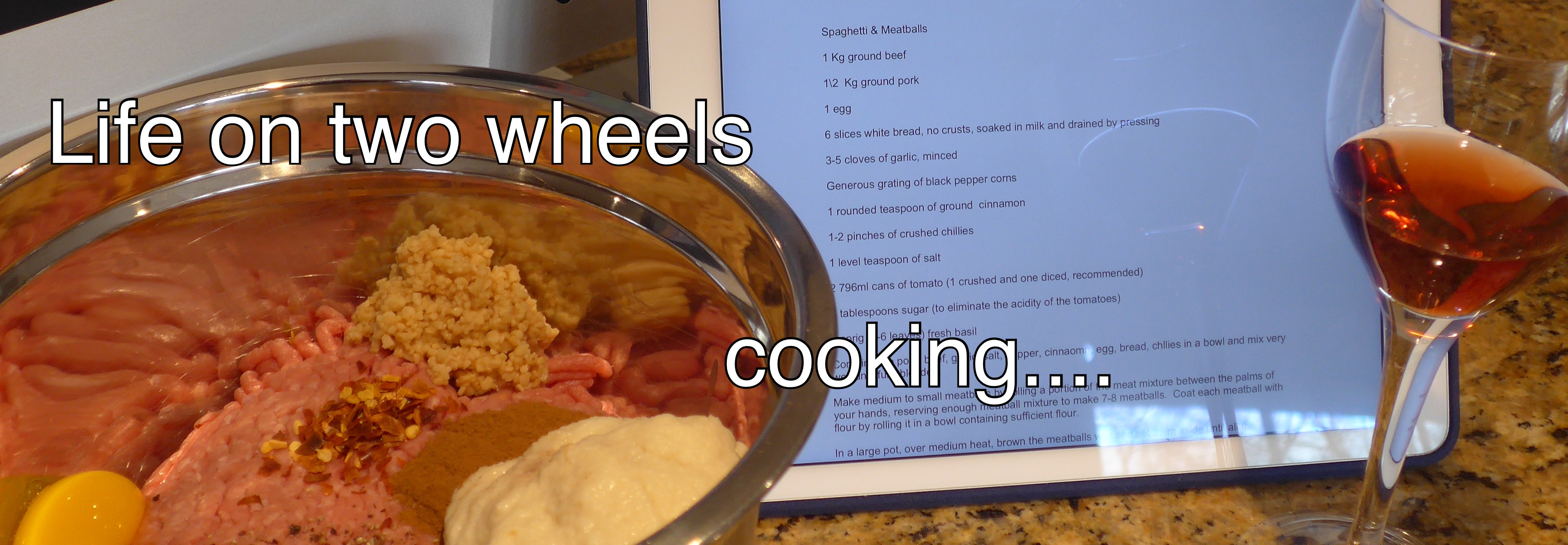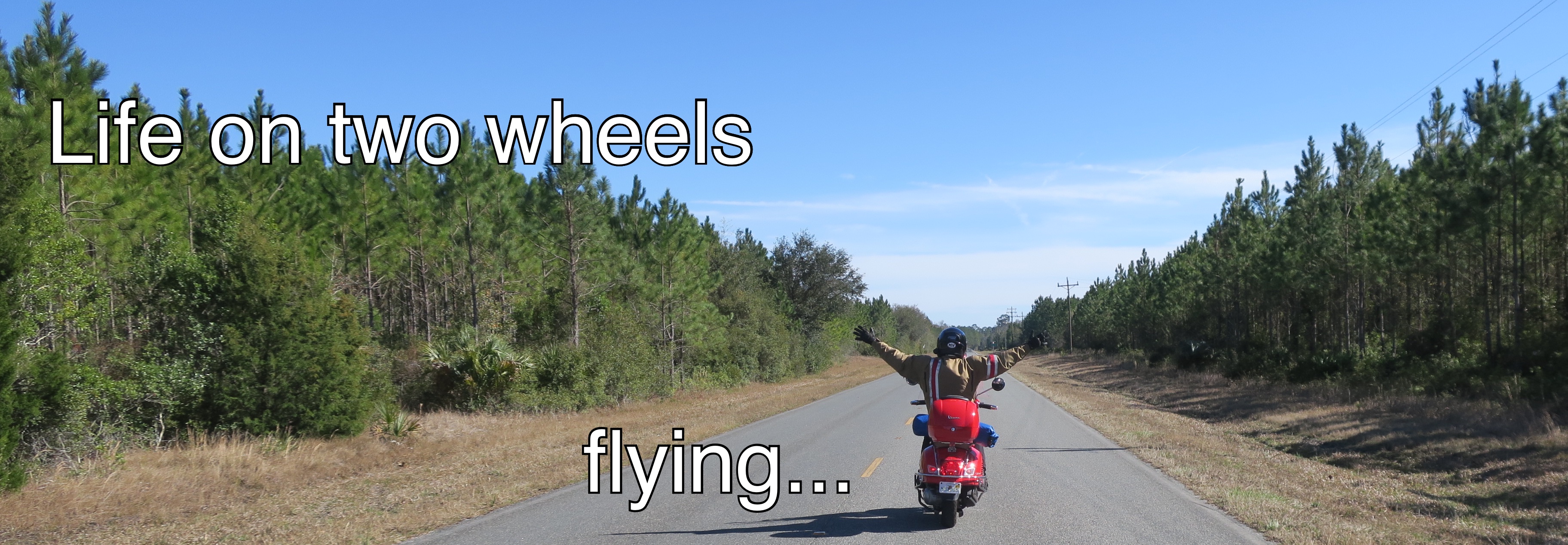When the time came to install heated grips on the Vespa GTS 300 i.e. Super, I hit a challenge. There's always a challenge.
The challenge I faced the first time I installed heated grips, which was on the Vespa LX 150, was the fact that, at the time I did it, no one had, as far as I could tell, installed heated grips on a 150cc Vespa. Some folks said the electrical system could handle them, just; others flat out said (including a Vespa dealer or two, mine was one) the charging system was too weak to do the job. I really wanted heated grips for my commute downtown in the spring and fall, so I set out to prove the naysayers wrong. I had to learn a lot about motorcycle batteries and charging systems in general, and about the LX 150's charging system in particular. It was a mountain of work making sense of the pieces and putting the puzzle together. You will find those posts here, here, and here.
As it happened I concluded that there was just enough electrical headroom on that bike to power the grips, and I was right. Early on though I must admit that I carried a battery charger in my topcase, as well as a volt meter, and checked the battery every time I got to work. Eventually I realized that the bike's electrical system took to the extra load just fine and there were no battery or charging system incidents.
I had done enough research to conclude that the best heated grips that money could buy were the Hot Grips™ brand made in New Hampshire in the good old USA.Those are the grips I installed on the Vespa LX 150 and as long as I owned the bike they worked flawlessly.
The challenge with installing heated grips on the Vespa GTS was entirely different. There was a lot of evidence in support of heated grips installed on the Vespa GTS so capacity was not an issue. The challenge I faced this time was that Hot Grips™ were no longer available in Canada.
I somewhat reluctantly purchased Oxford Heaterz brand heated grips. There was a time when the British brand's gear was manufactured in England, but certainly not by the time I was in the market for their grips. Yes, another product outsourced to China, and that did not inspire confidence.
I reasoned that if there was going to be an issue with the Heaterz it was going to be with the solid state controller. I had installed a top-of-the-line Warm & Safe Heat-troller solid state continuously variable heat control (specifically this model), so all I needed were the actual Oxford grips. Not such a big gamble, I reasoned.
Well, it didn't turn out well.
The left grip was fine, but the right grip on the throttle side gave up the ghost in more or less short order. Actually, to be perfectly honest, it never totally died, it just became weak, then intermittent and weak, and the intervals when it provided tepid heat at best, became fewer, and further between. Most recently is just felt totally dead.
Last year I had a window to purchase Hot Grips™ and have them delivered to my sister-in-law in Florida, and she agreed to be my heated grips mule. I got them in June-ish, if I recall, but by that time I was no longer commuting, and the prospect of tearing the bike apart to install them was enough for me to put the job off. Until recently that is, when the prospect of riding to Toronto in late March without heated grips was enough to get me off the couch and back into Vespa brain surgeon mode.
In fact, I shouldn't have procrastinated for so long. The job is about a three hour job at my sluggish amateur pace, and that included troubleshooting the defective Heaterz grip to confirm my intuition that the problem was the grip itself and not the Heat-troller or some aspect of the wiring loom I built to support all the toys (Stebel air horn, dual power outlets, and the list goes on).
This past summer I suspected a bad electrical connection and actually took the trouble to eliminate the Oxford quick connectors on the right side by soldering the connections. That didn't alleviate the problem, pointing to the grip itself as the source of the disconnect.
Once I had to open the bike back up to install the Hot Grips™, I laid the soldered connection bare and set my volt meter on it. Sure enough, there was plenty of current coming from the Heat-troller and absolutely no sign of life in the grip.
By now I was beyond being upset with the quality of the Heaterz, I was in fact quite pleased that the problem was the grip, and not anything upstream.
The first order of business was to remove the Heaterz grips. Here's another bone of contention with the Oxford product. They supply superglue to install their grips. I thought I might have trouble getting the grips off. Ha! A barely vigorous twist on the left side and there was a soft 'crack' or 'snap' and the grip just came right off. I was taken aback to be honest. I mean the left grip isn't subjected to twisting normally, but the grip still needs to be secure, and the superglue is just not the right ingredient for the job, especially not for heated grips.
The instructions that come with the Hot Grips™ strongly advise using a particular type of high temperature epoxy, and no matter what, not to use superglue. And now you know why.
The throttle side was not quite as cooperative. The throttle tube is plastic, and I guess the superglue was a better mate for the throttle tube than it was for the handlebar. Barely applying heat from my heat gun did the trick. Another 'crack' 'snap' and off came the grip. Nowhere near the amount of effort it had taken to remove the stock grips when I installed the Heaterz.
And so it was good riddance to those Heaterz.
I assume that Oxford calls their heated grips 'heaterz' as a liability hedge since they aren't really 'heaters' and they must think that the substitution of the 'z' for the 's' makes the name less of an actual warranty of fitness for their intended purpose. Oh well, enough about them, let's move on with the good stuff.
Here's what you get with the Hot Grips™:
No fancy packaging, two really good heated grips, excellent instructions, some extra wire, some spacers for various types of bar end weights, a three position switch with a resistor, and special epoxy adhesive. The epoxy adhesive is an option. The first time I purchased Hot Grips™ I didn't spring for the epoxy and ended up using marine epoxy that may, or may not, have had the same qualities as the Devcon brand that the Hot Grips™ manufacturer recommends.
The first thing you notice when you compare a Heaterz grip with a Hot Grips™ grip is that the Oxford Heaterz looks like the better product.
 |
| Top: Hot Grips™; bottom: Heaterz |
 |
| Left: Hot Grips™; right: Heaterz |
In fact, when you have the luxury of comparing the Heaterz wire with the Hot Grips™ wire, as I just did, you find that where it counts most, in the conductor, the Hot Grips™ wiring is definitely superior. The bulk of the Heaterz that on a casual inspection makes a favorable impression, is just a double thick dose of inert sheathing covering a very thin conductor, nothing more.
 | ||
| Right: Hot Grips™; left: Heaterz; bottom: Heaterz quick connector |
One would think that the presence of quick-connectors would be an indicator of quality, like that beefier lead wire. In this case, the Oxford quick connector means you don't have to solder the connection, which means that you don't strip any wires, which means that you don't get to see the wires, which means you don't know that there is precious little copper hiding in that thick beefy wire.
Not too surprising then that my Heaterz grip suffered a continuity failure.
The Hot Grips™ leads have more copper conductor than inert insulation. I contacted Jim Hollander at Hot Grips™ to get his take on this because I know from experience how knowledgeable he is about his product and how passionate he is about it.
He didn't disappoint. Here's what Jim had to say...
"Wire failures: Years ago I fabricated a cam operated linkage to simulate the rotational cycles until my product's conductors failed. The test ran for (as I recall) 1.6 million 1/4 turn (90 degrees) cycles before the 24/7 testing stopped itself with conductor failure. 54 strands of copper from a reliable conscientious Massachusetts wire manufacturer (throughout my product's history) proved a good solution.
Internal strain relief within my product's inboard "thumb guard" resulted in static wire failure at 90 pounds of force. The amount of weight the wire would endure without pulling out of the grip surprised me too. The copper strands would always fail from the weight before the wire would disconnect from our heating wire. The black industrial looking twin lead wire was not what it appeared. We went to "irradiated" PVC insulation which significantly improved the outer jacket's resistance to the 450-490 F injection molding temperatures.
The black lead twin conductor wire is wrapped 180 degrees around the heating element before threading thru an internal unique injection molded device I invented to ensure the wire would not pull out of the crimped attachment points at the heating wires. The heating element wire-ends were modified in a unique bending jig to create a tiny "S" shaped wire that was locked into the crimp using specially ordered serrated brass crimps. The details of the interior bullet-proofing took years of work to perfect, all in place before we moved from Goshen, MA to Plainfield NH in 1989. I admit to being OCD about ensuring it was toughened internally. That OCD paid off when Yamaha Motor Corporation of Japan sent engineers to evaluate my company for supplying them w/ OEM grips for their snowmobile line in the late 1980s."And that, my friends, is what makes the difference between any old heated grip, and Hot Grips™ heated grips.
Moving on, the installation of the Hot Grips™ was a breeze.
The key with heated grips is the alignment of the throttle side grip, and specifically minimizing the stress on the lead wire when the throttle is twisted. I positioned the grip (the final gluing comes later) so the point where the wire connects to the grip is at the seven o'clock position when you look along the grip from the end where the bar end weight is. I followed the manufacturer's instructions and left a generous loop of lead wire so that when the throttle is twisted there will be no sharp bends in the wire.
The next step, with the grips still dry fitted (the right throttle side has a larger inside diameter to accommodate the throttle tube so make sure you have the grips on the correct sides), is to wire them to the solid state controller. If like me you are using a Heat-troller, wire the grips in parallel to the white and blue wires that come from the Heat-troller's control box.
A picture is worth the proverbial thousand words. Here is my wiring diagram (the twelve volt outlets were covered in an earlier project report):

I suggest you do as the manufacturer suggests and solder the connections then wrap the solder joint in electrical tape.
My Heat-troller was already installed, if you need guidance on how that aspect of the project is done, please click here to see the earlier project report.
With the grips wired up, turn on the ignition and switch on the heat to make sure that everything is working as it should. Within minutes the Hot Grips™ should be nice and... well nice and hot. You should know that my heated grips and 12 volt outlets are wired to a relay as shown in the wiring diagram above to make sure that they don't run the battery down if the grips are left on when the ignition is shut off.
The next step is to let the grips cool because heat affects the curing of the epoxy, and prepare to glue them on.
Make sure that the handlebar on the left side, and the throttle tube on the right side, are clean and free of excess glue. Use some sandpaper to rough up the surfaces a little to give the epoxy a better surface to bond with.
Mix equal amounts of the white and black epoxy components until you get a mixture of uniform color. Use a disposable plastic dish or tray to mix the glue. Using a piece of wood (I used a bamboo meat skewer) apply the epoxy to the handlebar in accordance with the manufacturer's instructions. Slide each grip into position, and make sure that throttle side lead wire is aligned as mentioned earlier.
Let the adhesive cure overnight.
Now put the bike back together. In my case that meant stuffing all the wiring (two fuses, two relays, one wiring terminal, one Heat-troller, two 12 volt outlets) that supports the heated grips, the 12 volt outlets, and the Stebel Compact Nautilus air horn back in behind the left knee pad thingy. Piece of cake, really. At least I built it all, so I know what every single wire and component does, and it all fits.
Congratulations, you now have a Vespa with state-of-the-art heated grips to fend off cold hands during those early spring and late fall joy rides.













4 comments:
The problem I've had with heated grips has been the shrinkage of the plastic wire insulation at cold temperatures. Even on the left grips the insulation contracts and separates where it goes into the grips exposing the copper wires. Without the insulation as a strain relief, the wires fail. I'll be think I'll try some that run the wires into the end of the bars. The heated grips on my 33 year old BMW are set up that way and they still work after all these years. The wire failures on those is limited to the harness from the bars to the fairing due to flexing in the cold. I finally lengthened all of the wires (horn, turn indicators, ignition, lights, etc.) as all were breaking due to flexing at cold temperatures.
Nice write up.
Well done, David. You will probably make good use of them on your trip down south.
When I was looking for heated grips for the Honda Shadow,the Honda dealer ordered some grips with internal wiring, at least the portion that ran from one grip to the other. I was a fairly elegant set up. The only problem is that like the Vespa, the Honda's bars are filled. So they had to be returned.
One day I may own a Beemer. Ah... the luxury!
I did a test ride today, some expressway, some surface streets, all at around 7 Celsius. The grips were at 50% and pumped out nice even heat. They will be essential for that ride to Toronto.
Post a Comment